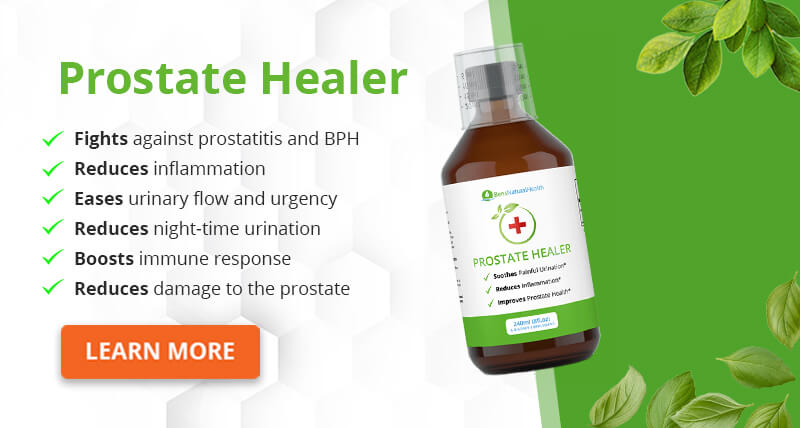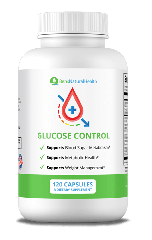- Q: What Antibiotics Treat Prostatitis?
- Q: What are the side effects and risks of antibiotics used for prostatitis?
- Q: How can side effects of antibiotics be reduced?
- Q: When are antibiotics needed to treat prostatitis?
- Q: When are antibiotics not needed for prostatitis?
- Q: How can unnecessary use of antibiotics for prostatitis be reduced?
- Q: Will prostatitis go away with antibiotics?
- Q: How quickly do antibiotics work for prostatitis?
- Key Patient Questions on Best Antibiotic for Prostatitis
- Conclusion
- Our Medical Review Process
- Our Editorial Guidelines
- Medical Disclaimer
- Source
One of the most important organs for male sexual health is the prostate gland. Prostatitis, an inflammatory disease of the prostate, accounts for 25% of urologist visits worldwide. The inflammation can be triggered by a bacterial infection, but in some cases, it may result from immunological processes unrelated to infection. According to the National Institutes of Health, prostatitis can be classified into four categories upon diagnosis:
- Category I: Acute bacterial prostatitis (an acute infection of the prostate).
- Category II: Chronic bacterial prostatitis (a recurrent infection of the prostate).
- Category III: Chronic nonbacterial prostatitis/chronic pelvic pain syndrome (no detectable infection and sometimes no clear evidence of inflammation).
- Category IV: Asymptomatic inflammatory prostatitis (the prostate is inflamed without causing symptoms such as fever, blood in the semen, or urinary problems, though a semen culture may be positive).
In this article, we will examine in detail the best antibiotic for prostatitis. We will explore how the choice of antibiotics or other medications depends on the type of prostatitis, and answer key questions such as: What antibiotics are used to treat prostatitis? How long does prostatitis last with antibiotics?
We spoke with Dr. Parra, a renowned expert in urology and prostatitis treatment, who provided insights backed by recent studies and extensive clinical experience. A medical doctor has thoroughly reviewed all information to ensure accuracy and reliability.
Q: What Antibiotics Treat Prostatitis?
Dr. Parra answers: Antibiotics are primarily used for prostatitis when there is evidence of a bacterial infection—this applies to both acute (Category I) and chronic bacterial prostatitis (Category II). It may also be recommended if prostatitis was found incidentally, as in asymptomatic bacterial prostatitis (Category IV).
The choice of antibiotic depends on whether the infection is uncomplicated or complicated, as well as on the specific bacterial pathogen involved. However, the NICE guideline for selecting antibiotics includes the same list of medications commonly prescribed for both acute and chronic prostatitis.
The first-line antibiotics are fluoroquinolones. More specifically,
- Ciprofloxacin
- Ofloxacin
Some patients are not recommended to consume fluoroquinolones due to a high risk of developing side effects. In such cases, we can use:
- Trimethoprim
As the second choice of antibiotic treatment, we have:
- Levofloxacin
- Co-trimoxazole
The choice of antibiotic depends on the type of prostatitis, the severity of symptoms, the patient’s health risks, and the extent of treatment. For instance, fluoroquinolones should not be used long-term, and careful usage is warranted in senior patients and those at high risk of tendon rupture. In such cases, Trimethoprim can be considered, or co-trimoxazole for more severe infections.
The Pharmacovigilance Risk Assessment Committee of the European Medicines Agency recommends limiting the use of ciprofloxacin and other fluoroquinolones due to the risk of serious, long-lasting side effects affecting muscles, tendons, bones, and the nervous system. Nevertheless, they recognize that fluoroquinolone antibiotics are essential for treating acute prostatitis, viewing this condition as a severe infection that merits an exception to their guidelines. Thus, the treatment of acute prostatitis stays as mentioned below.
Antibiotics for acute prostatitis
Dr. Parra answers: For uncomplicated acute prostatitis (Category I), oral fluoroquinolones or trimethoprim-sulfamethoxazole (TMP-SMX) are typically prescribed. In some cases, broad-spectrum penicillin derivatives or a third-generation cephalosporin may also be used. Notably, fluoroquinolones have been shown to achieve up to four times higher intraprostatic concentrations than beta-lactams.
In complicated cases—such as a patient with sepsis requiring hospitalization—the treatment approach shifts to intravenous (IV) antibiotics. IV fluoroquinolones, often in combination with an aminoglycoside, are the common choices in these scenarios.
For more information on the antibiotics used in complicated acute prostatitis, you can consult the following table based on a recent scientific review on prostatitis therapeutics:
| Non-complicated prostatitis | Fluoroquinolones, trimethoprim-sulfametoxazole, broad spectrum penicillin derivative, or third generation cephalosporin | |
| Complicated prostatitis | Sepsis | Fluoroquinolone combined with aminoglycoside with or without penicillin or second/third generation cephalosporin |
| Prostatic abscess | Fluoroquinolones in outpatient settings; third generation cephalosporin, aztreonam, or aminoglycoside plus ampicillin in unstable patients | |
| Sexually-transmitted infection | Cephalosporins for N. gonorrhea; azithromycin or doxycycline for C. trachomatis | |
| Genitourinary tuberculosis | Isoniazid, rifampicin, or pyrazinamide | |
Antibiotics for chronic prostatitis
Dr. Parra answers: Chronic bacterial prostatitis (Category II) presents a more complex challenge because very few oral antibiotics can penetrate the prostate tissue effectively. A bacteriological culture is usually necessary to identify the specific pathogen and its antibiotic sensitivity. For instance, antibiotics such as linezolid and moxifloxacin may be selected to target gram-positive organisms, while fluoroquinolones, macrolides, or even fosfomycin might be used against gram-negative bacteria like Escherichia coli. Additionally, in cases involving atypical organisms such as chlamydia, a combination of azithromycin with levofloxacin is commonly used. Recent studies have also explored the use of clindamycin against Cutibacterium acnes, an atypical organism increasingly linked to chronic prostatitis.
Q: What are the side effects and risks of antibiotics used for prostatitis?
Dr. Parra answers: As with all medications, antibiotics have potential side effects and risks. Some common adverse effects include:
- Headache: This is often seen with fosfomycin, quinolones, and certain penicillin derivatives.
- Digestive Problems: Abdominal pain, nausea, vomiting, and diarrhea can occur because antibiotics disrupt the normal intestinal flora. Typically, these effects resolve within a few days.
Photosensitivity: Many patients on quinolones or trimethoprim-sulfamethoxazole experience increased sensitivity to light, which may result in skin irritation. - Yeast Infections: The disruption of natural flora, especially in the vaginal area, can lead to candidiasis.
- Tendon Damage: Although less common, tendon damage—particularly associated with levofloxacin and other fluoroquinolones—can occur.
- Allergic Reactions: There is a risk of allergic reactions, especially with penicillin derivatives, which in severe cases may lead to anaphylaxis, a potentially life-threatening condition requiring immediate medical attention.
Fluoroquinolones are considered the first-line antibiotic choice for acute bacterial prostatitis and certain cases of chronic bacterial prostatitis. As a result, most discussions in the scientific literature regarding side effects focus on Ciprofloxacin and other medications in this category.
Safety research on Cipro indicates that 9.3% of individuals using this antibiotic might experience side effects at some point. The most prevalent side effects are digestive issues, seen in 4.9% of patients, followed by metabolic or nutritional concerns at 4.4%, central nervous system effects at 1.5%, and skin-related issues affecting 1.1% of patients. The most concerning side effect, associated with tendon tears and ruptures, is categorized as a musculoskeletal issue and reported in 0.1% of patients.
Q: How can side effects of antibiotics be reduced?
Dr. Parra answers: Reducing antibiotic side effects involves a few key strategies:
- Follow Your Prescription: Take antibiotics exactly as directed by your physician. If you are advised to take them with food, doing so can help mitigate gastrointestinal side effects.
Complete the Full Course: Even if symptoms improve, complete the entire course to prevent bacterial resistance. - Avoid Alcohol: Some antibiotics, like trimethoprim-sulfamethoxazole, can interact negatively with alcohol, affecting their concentration and effectiveness.
Use Probiotics: Taking probiotics can help restore your intestinal flora, thereby reducing antibiotic-associated diarrhea and other gastrointestinal issues.
Q: When are antibiotics needed to treat prostatitis?
Dr. Parra answers: Antibiotics are indicated only when prostatitis is confirmed to be bacterial in origin. A bacteriological study is often required to pinpoint the exact bacteria and determine the appropriate antibiotic based on its sensitivity. This ensures that patients receive targeted treatment for their condition.
Sign Up For Our Newsletter!
- Receive 10% off our best-selling supplements
- Get Your FREE PSA Lowering Diet Plan
- Be the first to hear about sales and promotions
- Stay up to date on our latest health news
Q: When are antibiotics not needed for prostatitis?
Dr. Parra answers: Not all prostatitis cases require antibiotic treatment. For instance, chronic pelvic pain syndrome may stem from non-infectious inflammation or damage to surrounding organs, meaning that antibiotics would not be beneficial. Similarly, in cases of asymptomatic inflammatory prostatitis, the decision to use antibiotics is controversial, particularly because such treatment can elevate PSA levels in men without offering clear benefits.
Q: How can unnecessary use of antibiotics for prostatitis be reduced?
Dr. Parra answers: To avoid the overuse of antibiotics, it is crucial that patients do not self-medicate and only use these medications under a doctor’s prescription.
Symptoms like burning during urination, urinary urgency, increased frequency, and nocturia should prompt a visit to your doctor, who can accurately diagnose whether the issue is due to a urinary tract infection or prostatitis—and whether it is bacterial in nature.
For physicians, performing a bacteriological study is essential to determine the most effective antibiotic regimen, particularly in cases of chronic bacterial prostatitis with recurrent symptoms. This careful selection process helps to improve antibiotic sensitivity and prevents the unnecessary use of multiple antibiotic combinations.
Q: Will prostatitis go away with antibiotics?
Dr. Parra answers: In cases of acute and chronic bacterial prostatitis, antibiotics can effectively alleviate the infection—provided the treatment is adhered to and the correct antibiotic is chosen.
However, antibiotic resistance may necessitate adjustments to the treatment plan. Some patients with chronic prostatitis or chronic pelvic pain syndrome may experience persistent or recurrent symptoms despite antibiotic therapy. In such cases, a thorough diagnostic process is essential to identify the underlying cause, and treatment may require a multifaceted approach.
Q: How quickly do antibiotics work for prostatitis?
Dr. Parra answers: Patients typically notice a progressive improvement in symptoms within five days to a week of starting antibiotic therapy.
Some may experience almost immediate relief after the first few doses, but it is critical to complete the full course of treatment regardless of early improvements. In complicated cases—such as acute prostatitis requiring hospitalization—oral antibiotics may be continued for up to four weeks after discharge.
For chronic bacterial prostatitis, treatment might extend for several months. Adherence to the full treatment regimen is key to preventing recurrence and avoiding the development of antibiotic resistance.

Key Patient Questions on Best Antibiotic for Prostatitis
Q: What non-antibiotic treatments or therapies can complement antibiotic use in managing prostatitis?
Dr. Parra answers: In addition to antibiotics, patients with prostatitis may also benefit from other medications. Analgesics and antipyretics are often prescribed, especially in cases of acute bacterial prostatitis, to relieve pain and manage fever.
Patients with prostatitis sometimes experience constipation, which may require stool softeners to promote bowel movements. Additionally, they might need urinary analgesics like flavoxate and phenazopyridine to manage their lower urinary tract symptoms. In cases of bladder outlet obstruction and voiding problems, alpha-blockers can also be used.
However, sometimes the standard treatment is insufficient to control the symptoms, leading patients to explore phytotherapy and other alternative options. A study published in the journal Current Urology Reports identifies several supplements that may positively contribute to prostatitis treatment, including saw palmetto, quercetin, bee pollen extract, and zinc. The authors also highlight alternative therapies that alleviate pain and enhance quality of life, such as acupuncture.
These therapies can serve as complementary treatments to enhance the effects of antibiotics, anti-inflammatories, and analgesics. They may also promote prostate health and reduce the likelihood of future relapses. Therefore, they are frequently recommended alongside medical treatment rather than as a substitute. It is essential to discuss any new supplements and complementary therapies you are considering with your doctor, particularly if you are taking multiple medications or have a complex health status.
Can long-term use of antibiotics for chronic prostatitis lead to additional complications or secondary infections?
Dr. Parra answers: Yes, prolonged use of antibiotics can lead to further side effects and heightens risks for certain patients. It is advisable only for recurrent instances of chronic prostatitis and when frequent reinfections necessitate a preventative antibiotic regimen. Nonetheless, potential complications should be taken into account, and some may be mitigated right from the beginning of treatment.
One of the most common complications of long-term antibiotic use is a modification of gut microbiota. Intestinal bacteria are swept out along with the pathogenic agents in the prostate, and their absence may trigger secondary gut infections and diarrhea. To counter this side effect, probiotics can be used alongside antibiotic treatment. A recent study published in the journal Probiotics and Antimicrobial Proteins examined ciprofloxacin, the most frequently used antibiotic for prostatitis, and how diarrheal events can be addressed with a single probiotic.
According to the research, Lactobacillus strains have the ability to recover gut microbiota after Cipro and similar antibiotics are used. These strains not only increase the fecal presence of their species but also of other microbes, such as those from the Bifidobacterium genus. By doing so, probiotics compete with gastrointestinal pathogens and reduce the likelihood of colonization of the gastrointestinal mucosa.
Long-term use may also elevate the risk of rarer and potentially debilitating side effects, such as tendon rupture associated with Ciprofloxacin. While musculoskeletal side effects of these antibiotics are not the most common, they become more prevalent as patients age and the duration of treatment increases.

How is antibiotic resistance monitored in patients with recurrent prostatitis, and what steps are taken if resistance is detected?
Dr. Parra answers: Antibiotics are typically chosen without conducting a prostatic fluid culture and antibiogram. Physicians generally rely on first-line antibiotic therapy or switch to a second-line option if required. Furthermore, treatment protocols can vary per patient to select the most suitable antibiotic. This approach is effective most of the time, except when the bacterial strain is resistant to the standard antibiotics.
To identify resistance and lower the chance of recurrences, patients with chronic prostatitis are prescribed an initial course of antibiotics. This treatment typically lasts 4-6 weeks, based on the patient’s health, symptom severity, and previous prostate issues. Following this first antibiotic regimen, doctors advise a follow-up to monitor the symptom score. Depending on the patient’s score, a second 4-6 week treatment course may be recommended, with another follow-up scheduled for week 12.
For patients with a history of recurrent chronic prostatitis symptoms, healthcare providers may suggest performing a prostatic fluid culture starting on the first day of treatment. This helps identify the specific causative agent of the condition and determine appropriate antibiotics. The subsequent follow-up protocol typically proceeds similarly, but rather than monitoring symptoms, new cultures will be taken until we confirm that the prostatic fluid is free of bacteria. Nevertheless, as indicated by the Australian Family Physician Journal, obtaining prostatic fluid samples can be challenging, and in many instances, monitoring through a urine sample suffices.
Q: What are the long-term risks of repeated antibiotic use for prostatitis?
Dr. Parra answers: Just like with long-term antibiotic treatment, frequently repeating antibiotic courses for chronic prostatitis can raise the risk of side effects, disturb helpful gut bacteria, and result in Clostridium difficile infections, diarrhea, and other stomach issues. Additionally, patients who cycle through various antibiotics often experience different antibiotic spectrums, which can further disturb the gut microbiota and affect overall gastrointestinal health.
The main issue for prostatitis patients is that sometimes the bacterial agent does not respond to antibiotic treatment, leading to a return of symptoms. When this occurs frequently, it typically indicates bacterial resistance, necessitating a change in the antibiotic to eliminate the infection. This situation exposes the patient to the side effects of multiple antibiotics instead of just one type.
The immune system and metabolic effects of antibiotics may increase, raising the likelihood of antibiotic resistance due to their indiscriminate use. Additionally, repeated antibiotic use can lead to hepatotoxicity or nephrotoxicity, depending on the primary route of elimination for the antibiotics.
Q: How is antibiotic resistance managed in prostatitis treatment?
Dr. Parra answers: When antibiotic resistance is detected or suspected through follow-ups and reevaluations, doctors discontinue empirical treatment for prostatitis and begin to assess the case more closely. In other words, rather than selecting first-line or second-choice antibiotics based on the situation, they adopt an evidence-based approach that reduces unnecessary antibiotic exposure through precise diagnosis and bacterial identification.
In these cases, patients are more likely to undergo urine cultures, semen analyses, or prostate secretion testing to determine which microorganism is causing the symptoms and which antibiotics are more effective in treating the infection. For this purpose, sensitivity testing is performed to identify the most effective antibiotic. This also helps identify cases of non-bacterial prostatitis, which may present similar symptoms but, since it is not associated with an infection, does not require antibiotic therapy. After identifying the causative agent and its sensitivity to antibiotics, narrow-spectrum antibiotics are preferred over broad-spectrum ones, provided that the bacteria are highly sensitive to them.
A recent study on chronic prostatitis management mentions that new antibiotic therapies are being proposed for cases with antibiotic resistance, such as fosfomycin, which can be taken orally every day for one week, followed by an administration every other day for six weeks.
After prescribing antibiotic therapy, doctors may also plan a strategic follow-up with retesting to evaluate how the infection is responding to treatment. This is usually done in chronic prostatitis; therefore, follow-up protocols are generally scheduled at weeks 4 to 6 to determine whether to continue antibiotic treatment for another 4 to 6 weeks.
Q: What follow-up tests should be done after completing antibiotic therapy?
Dr. Parra answers: Depending on the type of prostatitis, the patient’s medical history, and the risk of relapses, follow-up tests may vary. A recent open-access review on the topic outlines how to conduct symptom assessments and clinical evaluations, as well as bacterial cultures or imaging tests if a complication is suspected.
Symptom assessment and clinical evaluation are typically conducted using standardized symptom questionnaires, such as the NIH Chronic Prostatitis Symptom Index, which helps monitor improvements in pain, urinary dysfunction, and quality of life. Doctors may also perform a digital rectal exam to assess for swelling and tenderness, which may indicate that inflammation and infection have not yet resolved.
More complex cases may require urine and semen cultures. Ideally, these should be done with prostatic fluid, but obtaining a correct sample is not always simple. Therefore, doctors typically conduct a urine analysis before and after a prostatic massage to identify potential bacteria that may persist in the prostate. In some instances, tests yield inconclusive results and necessitate a semen analysis to detect ongoing infections. These cultures are often accompanied by antibiotic sensitivity testing, particularly in patients with suspected antibiotic resistance.
When symptoms persist despite appropriate antibiotic selection and treatment, imaging tests are included in the follow-up exams to evaluate complications. For example, a transrectal ultrasound can help identify calcifications, structural abnormalities, or a prostatic abscess, which is a common reason for antibiotic treatment failure. In certain situations, an MRI or CT scan may be performed, but this is reserved for cases of pelvic pathology or bladder dysfunction.
Q: When should a doctor consider switching antibiotics during treatment?
Dr. Parra answers: There are several instances when a doctor may choose to switch antibiotics during or after treatment. For example, if there is no clinical improvement in the follow-up tests or if, despite clinical improvements, follow-up tests indicate a persistent infection. A change in antibiotics may also be advised when patients report severe or intolerable side effects or when a new symptom or complication arises that requires prompt resolution.
A recent study published in the journal Expert Opinion on Pharmacotherapy explains that whenever symptoms persist or worsen at follow-up tests (2-4 weeks in acute bacterial prostatitis and up to 6 weeks in chronic bacterial prostatitis), we should immediately suspect bacterial resistance and change the antibiotic. For example, if a patient with acute bacterial prostatitis has taken Ciprofloxacin for 3 weeks and experiences no improvement, he needs to switch antibiotics based on culture results.
When follow-up tests include urine or semen cultures and show persistent infection, the patient’s clinical improvement is irrelevant. The risk of relapses remains very high, so antibiotic sensitivity testing should be performed to adjust antibiotics and begin a new antibiotic course. For instance, a patient with chronic prostatitis or multiple episodes of acute prostatitis may return for follow-up with clinical improvements; however, the doctor may order a post-prostatic massage urine test to evaluate the risk of relapse. If the tests are positive and the sensitivity testing indicates fosfomycin sensitivity, the patient will start a new antibiotic course using this medication.
As mentioned above, patient experience is also crucial in selecting the right antibiotic. If you are encountering severe or intolerable side effects from Ciprofloxacin, such as diarrhea or tendon pain, there are other options worth considering. Your doctor may suggest switching to another effective treatment, such as trimethoprim-sulfamethoxazole. Additionally, if patients begin experiencing fever and chills, and a prostatic abscess is detected, doctors may choose to change the antibiotic or resort to IV antibiotics to manage the complications.
Conclusion
Prostatitis is an inflammation of the prostate that can be caused by a bacterial infection, though not all forms are infectious. Treatment depends on the type of prostatitis—acute bacterial prostatitis, chronic bacterial prostatitis, or nonbacterial forms—and is guided by bacteriological studies when needed.
But what is the best antibiotic for prostatitis? The most commonly prescribed antibiotics, particularly quinolones, are favored because they achieve high concentrations in the prostate tissue. Other antibiotics such as penicillin derivatives, aminoglycosides, fosfomycin, and macrolides may also be used based on the specific pathogen involved. It is vital to follow the prescribed treatment to the end to ensure complete resolution of the infection and to minimize the risk of bacterial resistance.
Consult with your healthcare provider before initiating any antibiotic treatment to ensure appropriateness for your specific health needs.
Our Medical Review Process
At Ben’s Natural Health, we are committed to transparency, accuracy, and scientific integrity. Every piece of content is developed by medical professionals and undergoes a thorough review every 12 to 24 months. This rigorous process ensures that our information remains current, precise, and based on credible, evidence-backed research. We exclusively reference peer-reviewed studies from reputable medical journals, providing full citations and direct links to enhance trust and confidence. Learn more about our medical review process and research standards.
Our Editorial Guidelines
For over 25 years, Ben’s Natural Health has been a trusted source of reliable, science-backed information on natural health. Our editorial guidelines uphold the highest standards of quality and integrity in every article we publish. Each piece is written by qualified professionals—including doctors, dietitians, nutritionists, fitness experts, and surgeons—and undergoes independent quality checks. We prioritize transparency by clearly displaying contributor credentials and biographies at the beginning of every article. Read our editorial guidelines to learn more about how we create and verify our content.
Medical Disclaimer
The content on this blog is for informational purposes only and should not be considered a substitute for professional medical advice, diagnosis, or treatment. While our articles are reviewed and written by licensed medical professionals, they may not address your specific health concerns. Always consult your primary care physician or a qualified healthcare provider before making any health-related decisions. Do not disregard or delay seeking professional medical advice based on the information provided here. Your use of this blog and its content is at your own risk.







